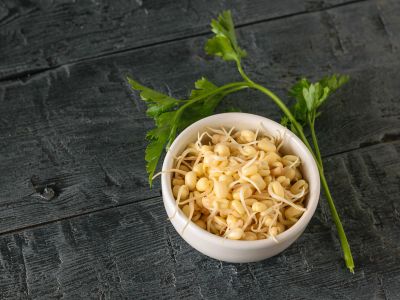You can grow enough protein in the garden for your whole family if you know which plants provide the most of this basic need.
Including Plants for Protein in Your Diet
You don’t have to be vegan to want to eat more plants that provide protein. Studies show that switching to a mostly plant-based diet can help save our planet in several ways. You can even consider it a fun challenge to select and grow plants for protein. Such a garden will give wonderful health benefits while easing global hunger and protecting rainforests. Focusing on fruits, grains, and veggies as your main food source can help save acres of rainforest which are cleared for animal agriculture. Another reason to highlight protein in the garden is because it saves money. Animal products are more expensive to buy and produce than plant-based foods. Such a diet has also been shown to lower risks of diabetes, cardiovascular disease, obesity, and reduces the chances of cancer. Plants that provide protein have all these health benefits and more.
Varieties of Plant Based Protein
Most of us know that legumes pack a protein punch, but what other types of plants are high in these necessary amino acids? Every plant contains some protein since it is an essential building block for all life. The amount varies by plant but you can be assured of at least some protein with every veggie or fruit you eat. These plant-based proteins have the highest amounts per cup:
Legumes – Huge variety such as peanuts, chickpeas, beans, lentils, and peas (10 grams)
Nuts and Seeds – Nuts and seeds add dimension to plant-based meals (6-12 grams)
Whole Grains – Good fiber and many other nutrients, plus they’re versatile (6-12 grams)
While these are the top three types of plants for protein, other foods also bring a lot of protein to the table. Some of these include:
Broccoli
Corn
Asparagus
Artichokes
Brussels Sprouts
Accessing Protein from Plants
You can amp up your plant-based protein even more by combining complimentary plants. Doing this in the correct way offers “complete” proteins. Most plants do not have all the amino acids we need, but by combining them, all the necessary needs can be present in the diet. Eating beans with rice is a classic example of a plant-based complete protein. If you combine legumes with any one of the top three protein plants, you can be assured of a complete protein. The best way to get complete proteins daily is by eating a wide variety of fruits, grains, and nuts.
